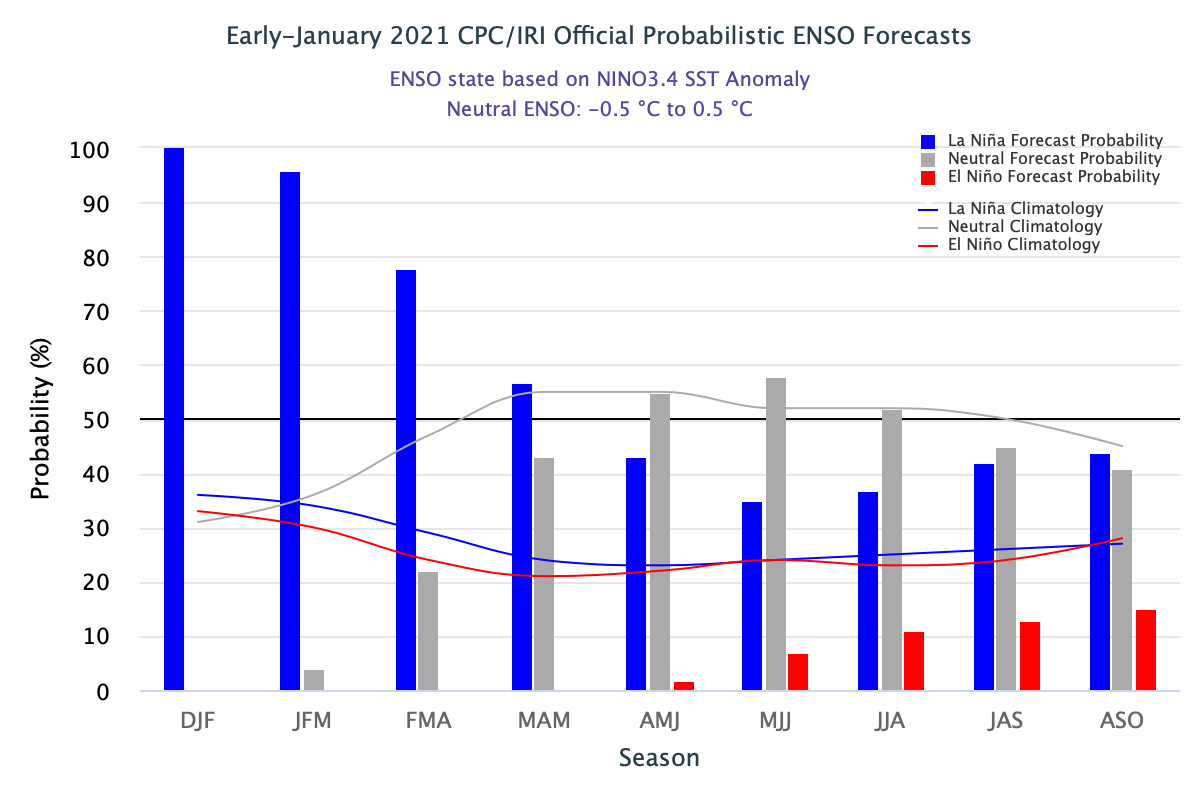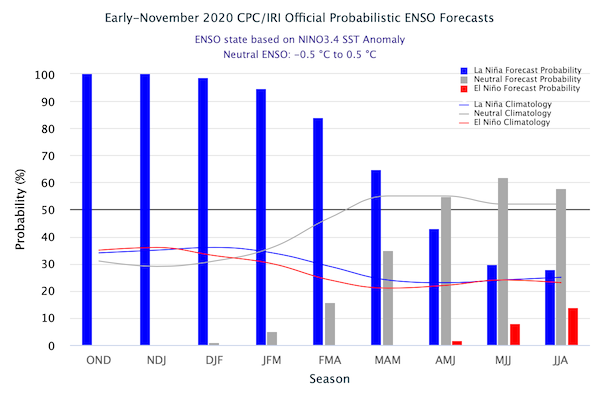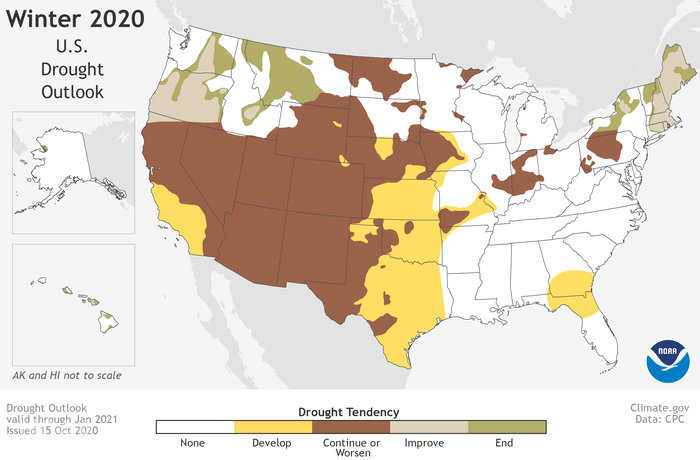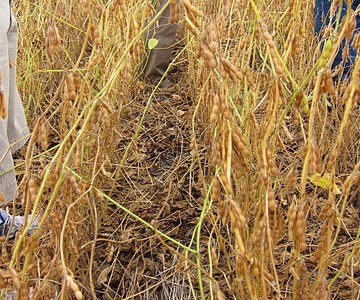El Nino and La Nina
-

The latest La Nina update from NOAA’s Climate Prediction Center shows that the La Nina is likely to continue through winter and into early spring, according to this story in Reuters. While this has not been a very typical La Nina winter so far due to the displacement of the cold air associated with the…
-

With La Nina now firmly in place, producers are starting to think about what that means for crop and fruit production next year. We know that La Ninas tend to bring warmer and drier than normal weather to most of the Southeast, and this one is expected to be fairly strong, so all of the…
-

The North Carolina Climate Office posted their winter outlook earlier this week. It is no surprise that it reflects what we know about the current La Nina. While the signal of La Nina is not as strong in North Carolina as it is in northern Florida and Alabama and Georgia, this year’s strong event should…
-

According to NOAA’s Climate Prediction Center, we have a 100 percent chance of a La Nina through winter, and a better than 90 percent chance through early spring. After that, the probability drops but stays above 50 percent through the March-May period before we go into the typical low probability in summer 2021. This is…
Posted in: El Nino and La Nina -

While those of us in the Southeast have experienced plenty of rain this year, large parts of the country have been fighting drought and heat. This has caused plenty of problems for farmers in the middle of the country, and they are worried that the effects of La Nina this winter may cause even more…
-

The latest La Nina advisory was released today by NOAA’s Climate Prediction Center. It shows that a strong La Nina signal is in place in the eastern Pacific Ocean and that the winds are now in sync with the ocean conditions. This means that La Nina is likely to continue through the winter months and…
Posted in: El Nino and La Nina -

In this blog we often talk about the impacts of El Nino and La Nina about the local climate. But the combination of the two, called ENSO for El Nino Southern Oscillation, also affects the climate across many other parts of the world, causing floods in some places and droughts in others. This article from…